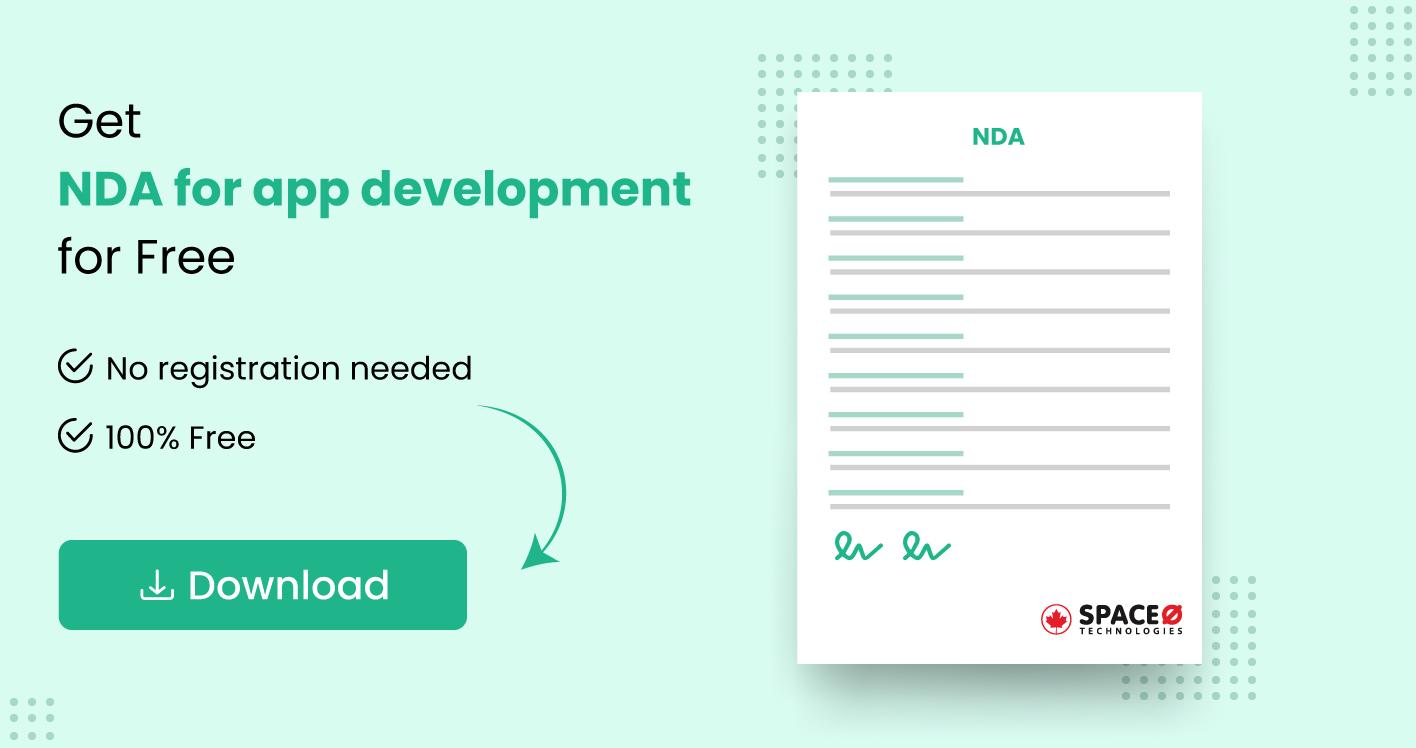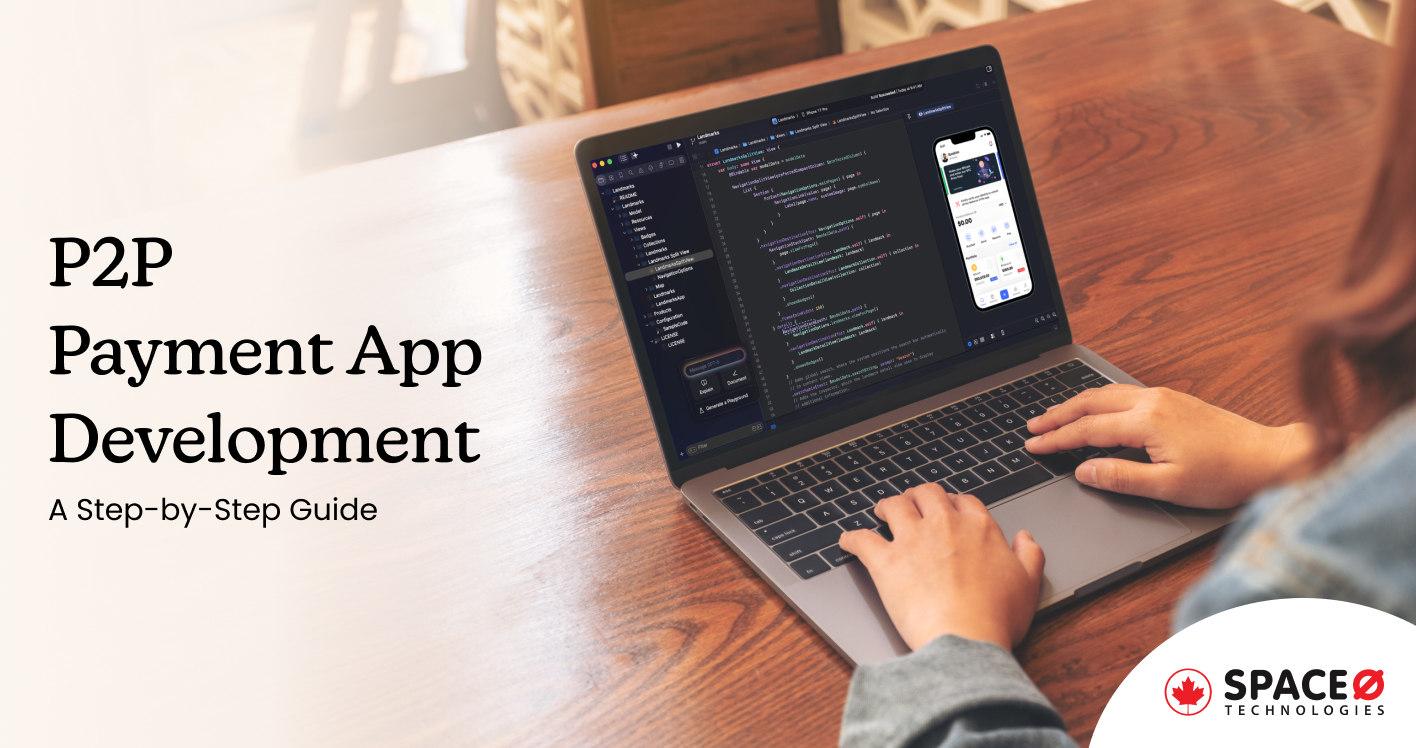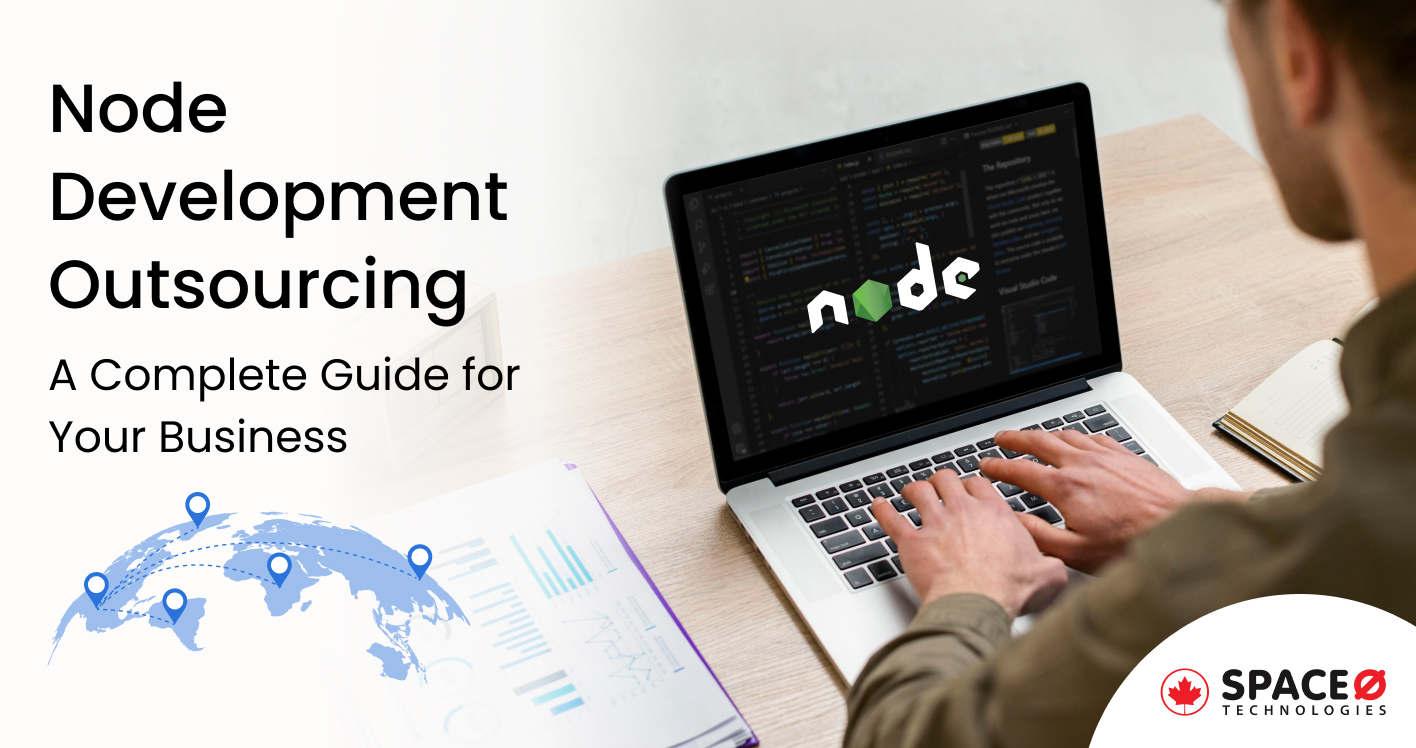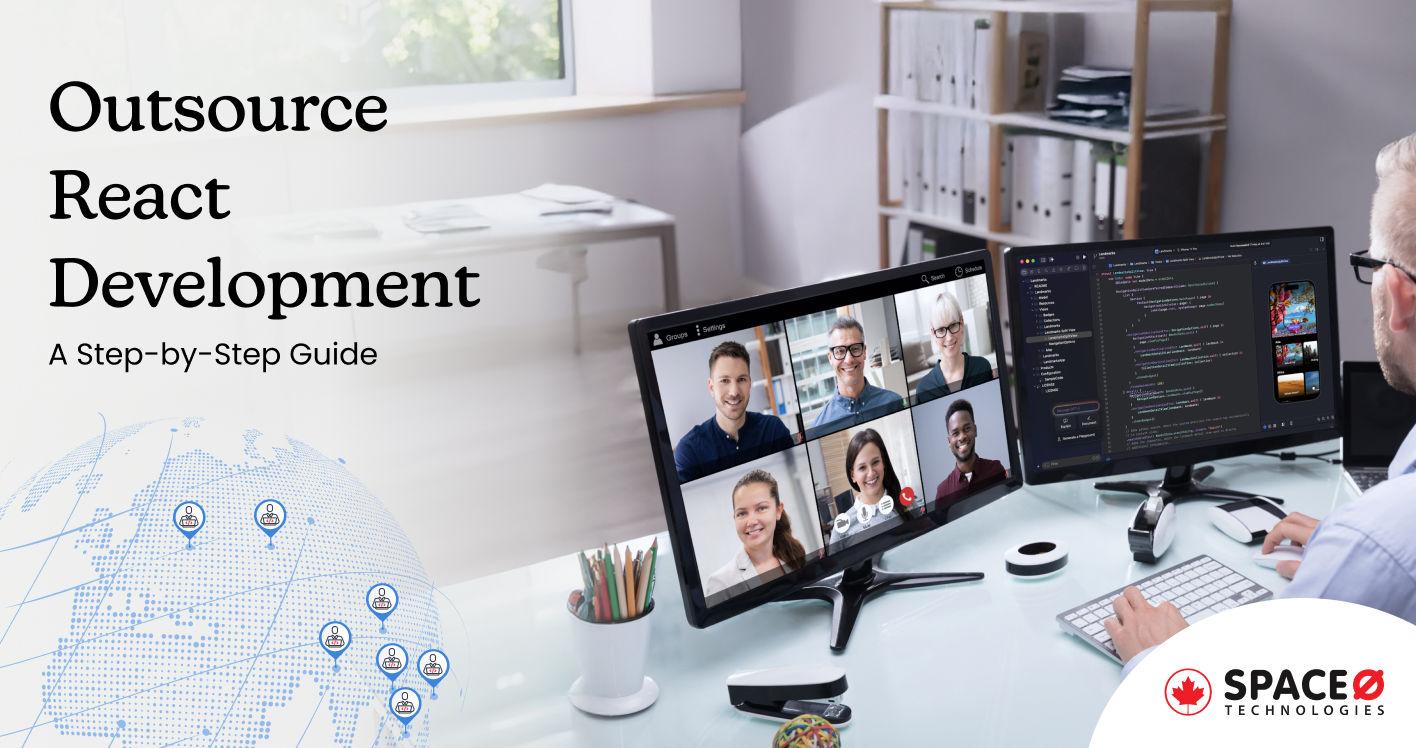
A Guide on NDA for App Development [Benefits + Steps]
Key Takeaway:
- Take advantage of the provided NDA template to save time and create a solid NDA for your app development projects.
- When in doubt or for complex cases, consult with legal experts to ensure your NDA is legally robust and tailored to your unique needs.
Imagine you have a unique app idea. What if someone steals the idea? This happens often in app development. An effective solution to this challenge is a Non-Disclosure Agreement (NDA).
Whether you’re an aspiring app entrepreneur, a startup founder, or an established business looking to develop a unique application, understanding how to protect your app idea with an NDA is essential.
Being a leading mobile application development company, we understand why it is important to protect your app idea using an NDA. So, we have written this guide to get the required information about NDA for app development. From this guide, you will learn about importance of signing an NDA and how to protect your app idea.
Let’s first discuss the definition of a non-disclosure agreement.
Table of Contents
What is a Non-Disclosure Agreement (NDA)?
A Non-Disclosure Agreement (NDA) is a legal contract or agreement that specifies the terms and conditions for exchanging, protecting, and disclosing confidential information involving two or more than two parties.
Having such an agreement for your development is crucial. It enables you to discuss the unique elements you need in your app, the app’s working process, and your revenue generation methods without the risk of information leakage.
After learning the definition of NDA, let’s discuss why is it important in app development.
Why is NDA Important in App Development?
Here are the top 4 benefits of implementing non-disclosure agreements.
- Protects your app’s confidential information, such as the app’s unique ideas, algorithms, designs, and code to ensure all of these remain confidential until you are ready to reveal the information.
- Prevents potential partners, developers, or investors, from stealing your app concept or disclosing it to others.
- Helps you maintain ownership and control over your app, and this legal contract provides the framework required to protect your intellectual property and technology assets.
- Build trust with everyone involved in your mobile app development project by showing your commitment to protecting their interests.
Non-disclosure agreement serves multiple purposes while developing mobile application by providing legal protection to your ideas, technologies, and partnerships while building trust and professionalism with multiple parties.
Do You Want to Protect Your App Idea?
Get in touch with us. Our team of experts will make sure your software development is secure and deliver you the solution you require.

Now you have a clear understanding of NDA, you might be concerned about the right time to consider an NDA. Here is the information you need.
When is the Right Time to Sign an NDA?
The perfect time to consider an NDA in your mobile app development process is as follows.
- Use an NDA when discussing your app idea with potential partners, investors, or advisors to protect your mobile app idea.
- Prior to development, an NDA is important when consulting with technical experts to protect technical details.
- When dealing with third-party services or APIs and discussing usage plans, consider implementing an NDA.
- Prior to beta testing, implement NDA to prevent users from publicly sharing app features or screenshots.
- When seeking investment, protect sensitive information like financial projections, user data, and future plans with an NDA.
After knowing the right time to consider an NDA for your project, let’s even understand when you should not sign an NDA.
When Not to Use an NDA in App Development?
Here are the pointers on when you should not use an NDA.
- If you’re discussing features that are already public or are considered industry standard, an NDA may not be necessary.
- If you’re seeking general feedback from a community or forum, using an NDA would be impractical and could deter people from helping you.
Let’s check out what are the components to include in an NDA.
What Should You Include in an NDA?
To help you ensure you have an effective NDA consider the following elements to include in your NDA.
- Define specifically the kind of information that must be protected, such as your app’s code, design concepts, and strategies.
- List out everyone involved, including yourself and anyone agreeing to keep your information private.
- Explain why you are disclosing this data, whether it’s for development discussions or seeking investment.
- Outline what should happen to the confidential information once the purpose of the NDA is fulfilled.
- Specify what the other party must follow to keep your information safe.
- Detail what the party receiving the information is obligated to do, like not sharing it with third parties.
- State the consequences or penalties if the receiving party breaches the NDA.
- Indicate the duration of this confidentiality. Cover the entire mobile app development process and possibly a bit more if required.
Now, you have an idea about the components you need to include in an NDA. Let’s provide you with a free template that might help you save time.
Get the Free NDA Template for App Development
If you do not want to spend time creating an NDA document, here we have prepared a copy of an NDA template that might help you.


After having a free template, if you want to know about how an NDA protects your app idea then read our next section.
How to Protect Your App Idea with NDA
Here are the 5 easy steps you need to consider to protect your app idea with NDA.
Identify the Parties Involved in the Agreement
Begin by clearly outlining the parties involved to create an effective NDA. This mostly involves your company and any third party or individuals who will have permission to use your sensitive information in the process of mobile application development. Ensure to provide all parties with full legal name and contact information.
Outline the Types of Confidential Information
You need to describe what are the types of confidential information you need to protect for your development project. Such information includes source code, algorithms, user data, design mockups, graphic elements, marketing strategies, and information about APIs. The more comprehensive and clear you are in defining what information needs to be confidential, the better your information will be secured.
Specify the Obligations of the Parties
After defining the types of information you need to protect, you must define the receiving party’s obligations concerning the confidential information. These responsibilities include:-
- Ensure that the recipient party is not permitted to exchange or disclose your confidential information to third parties without your written consent.
- Confirm that the confidential information can only be used for mutually agreed-up purposes, including app development, and nothing else.
- Instruct the recipient party to return or destroy all materials containing confidential information following project completion or at your own risk.
Define the Consequences and Duration of the Agreement
In this step, you must clearly state what will happen if the NDA is violated. If someone breaks the NDA, in such situations several implications are there, including the end of the business partnership or financial compensation.
The validity of NDA is for a specific time period or until there is an urgent need to terminate the agreement. Ensure that these guidelines are fair and not overly harsh. To ensure it is done correctly, seek legal advice from experts.
Consult with Legal Experts for Professional Guidance
When it comes to ensuring the protection of your intellectual property, consulting with legal experts becomes an important step. These experts also known as Intellectual Property (IP) attorneys assist you in creating a strong NDA that covers all key features while keeping your idea confidential.
Legal experts advise you on the legal implications of sharing your idea. Also, these experts assist you in taking legal action to protect your app if someone breaches the NDA. So before starting your development process, make sure you get assistance from legal experts to protect your concepts.
Now, you will have a clear idea about protecting your app idea using NDA. To help you have an effective NDA consider avoiding the mistakes covered in the following section.
Which Mistakes Should You Avoid When Drafting an NDA?
When drafting an NDA, you must avoid making mistakes as these mistakes can lead to repercussions. So, here are some common mistakes you can avoid.
- When used vague or unclear terms can lead to misunderstandings and disputes.
- Not specifying the exceptions to confidentiality weakens the NDA’s effectiveness.
- Fail to clearly mention the duration and termination conditions of the agreement.
- Drafting an NDA that heavily favours one party over the other parties.
- Do not include impractical or overly strict clauses.
- Not defining confidential information too broadly, makes the NDA overly restrictive.
- Lacks to include provisions for dispute resolutions such as arbitration or mediation.
Want to Keep Your App Idea Safe?
Our team of experts not only protects your app idea but also delivers customized app solutions to meet your specific needs. Let’s discuss your requirements.
Which are the Types of NDAs?
A Non-Disclosure Agreement (NDA) is also known as a confidentiality agreement and there are 3 types of non-disclosure agreements. Here are all the types covered.
Unilateral
In unilateral NDA only one party is disclosing confidential data with another party. The receiving party is legally obligated not to reveal or misuse the confidential information received. When a business has to secure its private data when sharing it with employees, contractors, or business partners, unilateral NDA is commonly used.
For example,
For a project, a technology startup is sharing its proprietary software code with a freelance developer. The startup wants to verify that the developer does not disclose or misuse the source code.
Bilateral
Bilateral NDA is also referred to as mutual NDA, as the name reflects that this NDA is a mutual legal agreement between two parties. Both sides ensure to keep each other’s confidential information safe. When two firms are thinking about forming a business partnership, or joint venture, bilateral NDA is used.
For example,
Two companies, Company A and Company B are discussing a possible merger. They must exchange financial data, company plans, and customer lists in order to assess the viability of the merger.
Multilateral
A multilateral non-disclosure agreement involves three or more parties. All parties promise to safeguard all sensitive information of the opposing parties in such agreements. Multilateral NDA is used in complex corporate transactions or collaborations involving multiple companies to ensure that the privacy of disclosed information is kept among all participants.
For example,
Several pharmaceutical companies have formed a research cooperation to create a new vaccine. They must exchange scientific findings, clinical trial data, and proprietary research methodologies.
After covering all aspects of the NDA, if you still want to learn more, check out the FAQ section.
FAQ About NDA for App Development
Who should sign the NDA?
The right people to sign the NDA include.
- App developers or development teams working on the project.
- The client or mobile app development company who hires the app developer.
- Third-party contractors involved in the development process (e.g., designers, testers).
- Investors or advisors who have access to project details.
- Freelancers or consultants contributing to the development.
- All the employees within the app development company who are involved in the development.
Can I modify an NDA after it’s been signed?
Yes, you can modify an NDA after it is signed. But this thing can be carried out only with the consent and agreement of all the involved parties. The changes you have made in the NDA agreement must be documented in written form and signed by all parties.
What if someone breaches an NDA?
Here are the consequences faced when someone breaches an NDA.
- Legal action can be taken, including lawsuits for damages and injunctive relief.
- Compensation for losses may necessitate monetary damages.
- Injunctions can be issued by the courts to prevent further disclosure.
- Breaching an NDA might result in reputational damage.
- Business connections, particularly in employment situations, can be terminated.
- In severe cases, such as violations of trade secrets or national security, criminal charges may be pursued.
Can I modify an NDA after it’s been signed?
Yes, you can modify an NDA after it is signed. But this thing can be carried out only with the consent and agreement of all the involved parties. The changes you have made in the NDA agreement must be documented in written form and signed by all parties.
Are there any alternatives to using an NDA?
Here are some of the alternatives to using an NDA.
- Trade secrets can be used instead of NDAs to keep important data secretive internally.
- Using confidentiality clauses in contracts to legally bind parties to maintain privacy is an alternative to relying on NDAs.
- Intellectual property protection through patents or copyrights may replace NDAs.
- Partnership agreements can be used to detail how to handle and safeguard confidential information in collaborations.
- Non-compete agreements can supplement non-disclosure agreements by preventing direct competition.
Protect Your App Idea With NDA
In this article, you have learned the important components of a non-disclosure agreement, the steps involved in creating one, the appropriate time to consider using one, the mistakes to avoid, and how non-disclosure agreements ensure that your mobile app idea is safeguarded and not shared with other parties.
If you are still not clear about NDA or looking for one of the leading mobile app development companies that accepts your NDA and works well for your app idea, then we can help you out. We have successfully delivered 300+ projects while securing information through non-disclosure agreements. Get in touch with us, and our team will guide you through all the legal formalities and provide you with your required solution.

Want to Protect Your App Idea?
Editor's Choice

P2P Payment App Development: A Step-by-Step Guide

Node Development Outsourcing: A Complete Guide for Your Business

Outsource React Development: A Step-by-Step Guide
All our projects are secured by NDA
100% Secure. Zero Spam
*All your data will remain strictly confidential.
Trusted by


Bashar Anabtawi
Canada
“I was mostly happy with the high level of experience and professionalism of the various teams that worked on my project. Not only they clearly understood my exact technical requirements but even suggested better ways in doing them. The Communication tools that were used were excellent and easy. And finally and most importantly, the interaction, follow up and support from the top management was great. Space-O not delivered a high quality product but exceeded my expectations! I would definitely hire them again for future jobs!”

Canada Office
2 County Court Blvd., Suite 400,
Brampton, Ontario L6W 3W8
Phone: +1 (437) 488-7337
Email: sales@spaceo.ca

